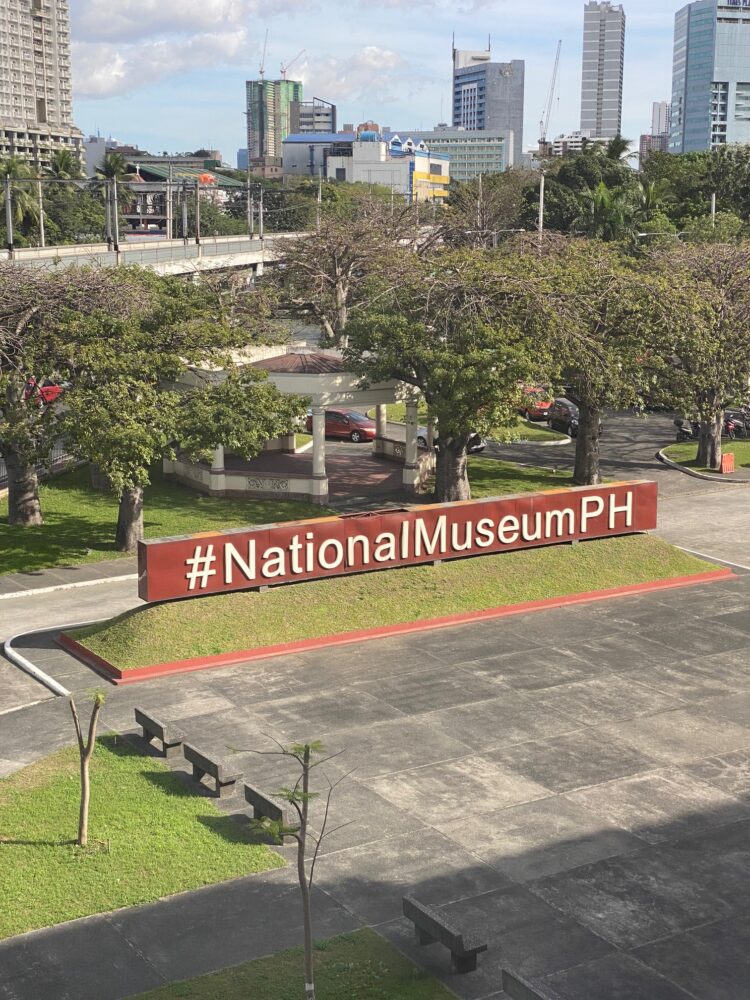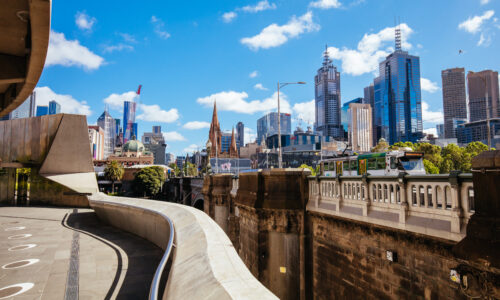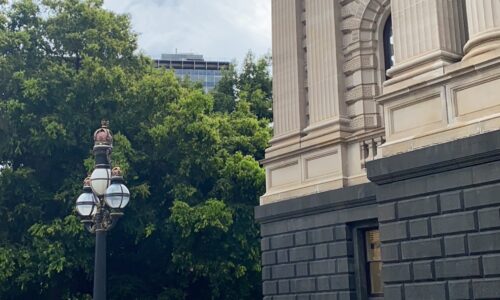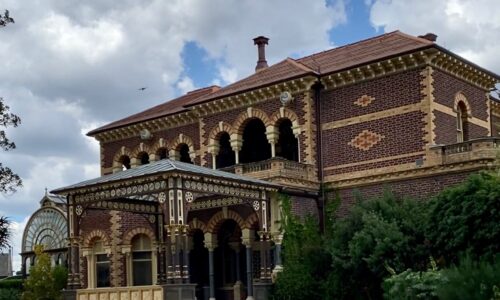The National Museum of Fine Arts in Manila boasts a rich history, established in 1926. It was originally named the National Art Gallery and is located in the Legislative Building in Ermita. In 1998, it was moved to its current home, the old Finance Building.
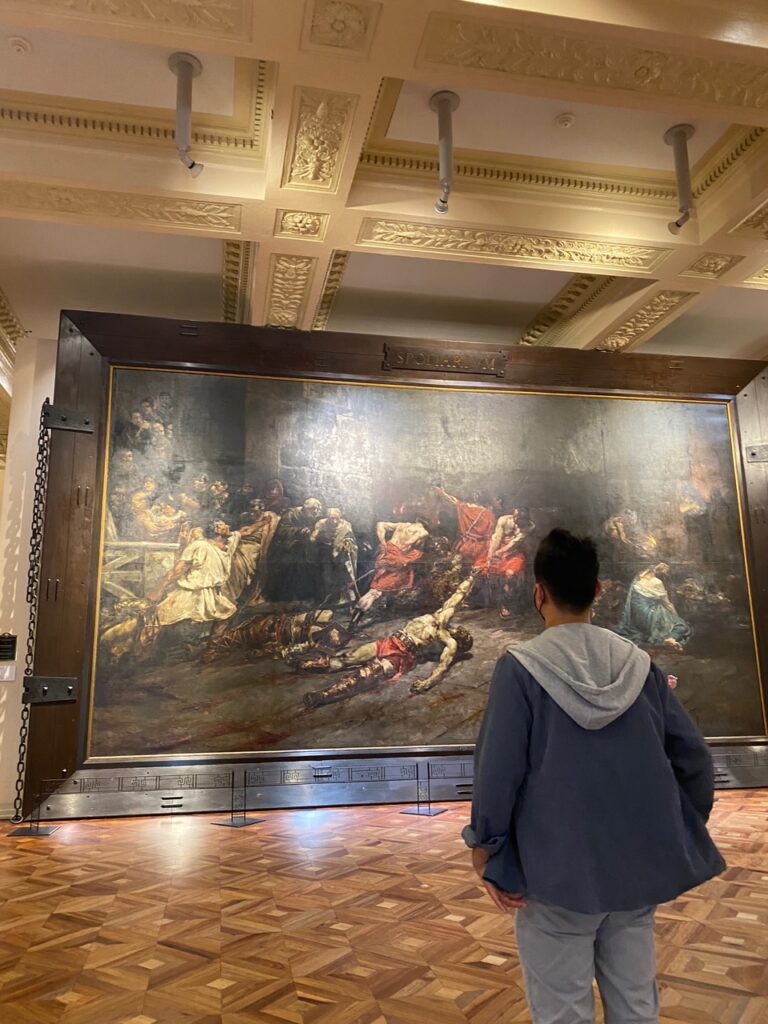
After entering the museum, you will be graced by the sight of Juan Luna’s Spoliarium painting. After entering the museum, you will be graced by the sight of Juan Luna’s Spoliarium painting. This masterpiece is one of the most iconic works of art in the Philippines and is considered to be Luna’s best work. The sheer size and grandeur of the painting immediately command attention as it stretches across an entire museum wall. Schools in the Philippines have taught us that the painting symbolises the nation’s struggle for independence and freedom.
I was personally mesmerised by Juan Luna’s iconic masterpiece “Spoliarium” and works by other renowned Filipino artists such as Fernando Amorsolo, Carlos “Botong” Francisco, and Jose Joya.
Other National Museum’s Remarkable Collections
The National Museum of Fine Arts in Manila boasts a rich history, established in 1926. It was originally named the National Art Gallery and is located in the Legislative Building in Ermita. In 1998, it was moved to its current home, the old Finance Building.
It has a vast collection of artworks reflects the Philippines’ diverse cultural heritage. Visitors can appreciate masterpieces by renowned Filipino artists such as Juan Luna and Fernando Amorsolo. Works by foreign artists who’ve contributed significantly to the Philippine art scene are also featured.
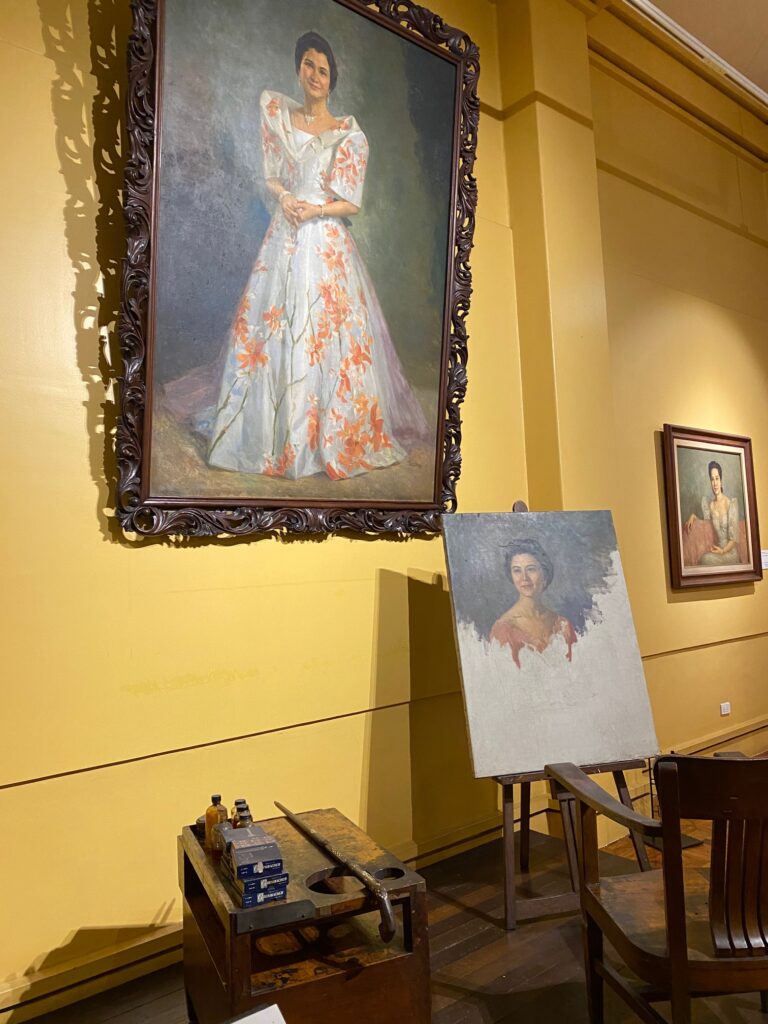
The museum showcases Fernando Amorsolo’s unfinished painting before he passed. For decades, the identity of the woman was unknown until 2018. After extensive investigation, it was determined that the woman in the painting is Belo’s mother, Florencia “Nena” Singson Gonzalez-Belo. The identification was made based on family photographs and testimonies from relatives. (Source: Preview.ph) These unfinished works serve as a reminder of the inherent beauty and enduring power of art, even in its incomplete form.
By showcasing the unfinished art of Fernando Amorsolo, the National Museum of the Philippines honours the artist’s legacy and provides an enriching experience for visitors. It allows them to witness the evolution of his artistic process and gain a deeper understanding of his mind through his preserved sketches.
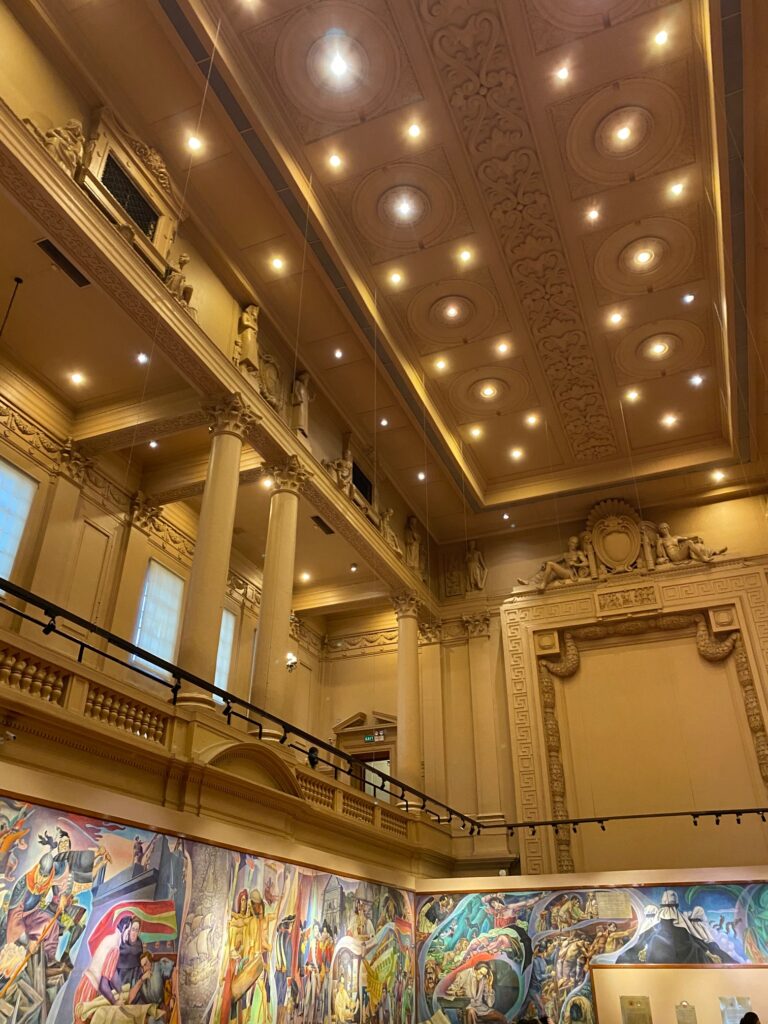
Two of my favourite collections are Filipino Struggles Through History by Carlos V. Francisco and The Old Senate Session Hall Entablature by Isabelo Tampinco.
Visiting the National Museum of Fine Arts is more than just a visual treat – it’s a journey through Philippine history and culture. Whether you’re a local or just visiting the Philippines, this museum offers an engaging experience that will leave you with a greater appreciation for Philippine artistry.
Museum Layout and Highlights
- Traditional Philippine Art: Exquisite pre-colonial artifacts, such as pottery, gold jewellery, and indigenous textiles.
- Spanish Colonial Art: Painted religious sculptures and furniture from the Spanish colonization period.
- Modern & Contemporary Art: Vibrant masterpieces from Filipino artists like Juan Luna, Fernando Amorsolo, and Benedicto Cabrera.
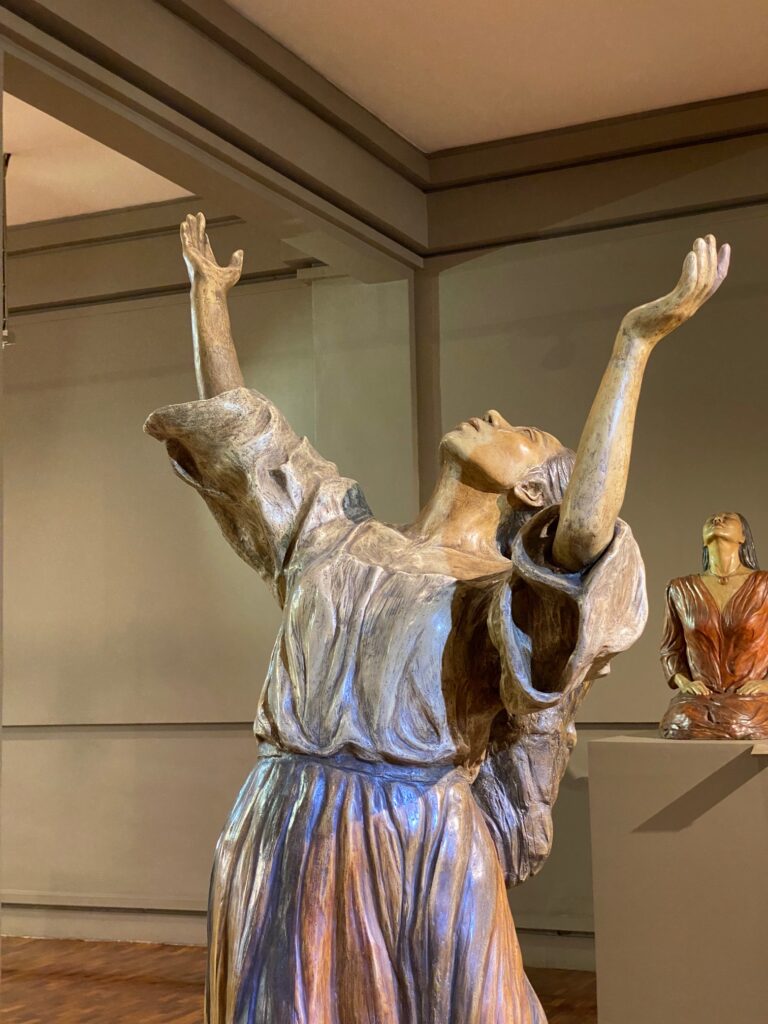
Location and Getting There
The National Museum of Fine Arts in Manila is a must-visit for art lovers. Here’s how to get there:
- Location: It’s near Rizal Park on Padre Burgos Avenue.
- Public Transportation: Take a jeepney, bus, or LRT-1 train to the United Nations Avenue Station.
- Driving: There’s a parking area available! But it’s important to be cautious.
Conclusion
The National Museum of Fine Arts in Manila is an art and culture treasure trove, offering visitors an amazing experience. Its magnificent collection of masterpieces and stunning architecture make it a must-see for art lovers.
Frequently Asked Questions
1. What are the opening hours of the National Museum of Fine Arts in Manila?
The National Museum of Fine Arts is open to the public from Tuesday to Sunday between 9:00 AM and 6:00 PM.
2. Are photography and videography allowed inside the museum?
Photography for personal use is generally allowed in the museum, but flash photography are not permitted. However, some exhibits may have specific restrictions, so it is advisable to check with the museum staff beforehand.

